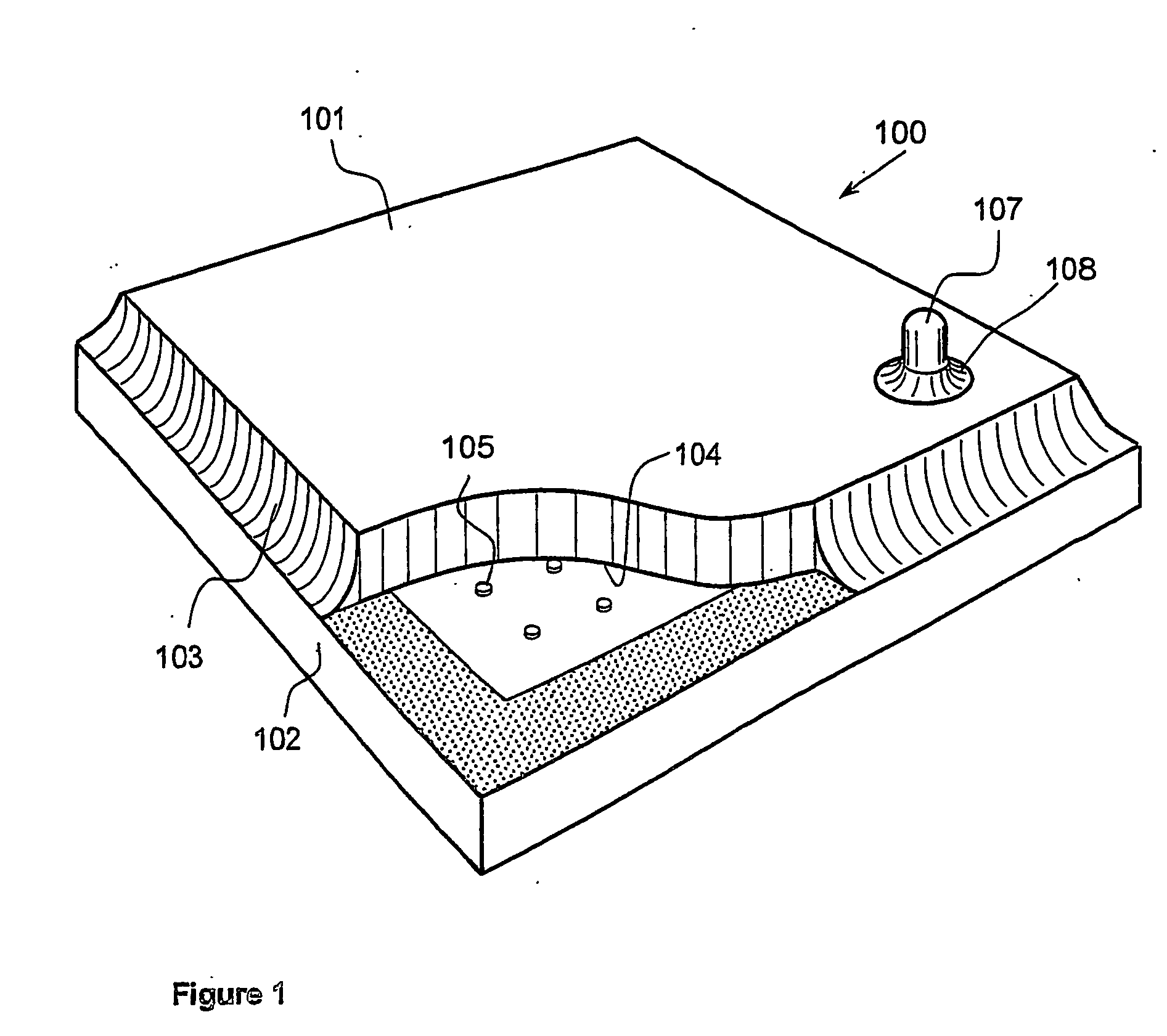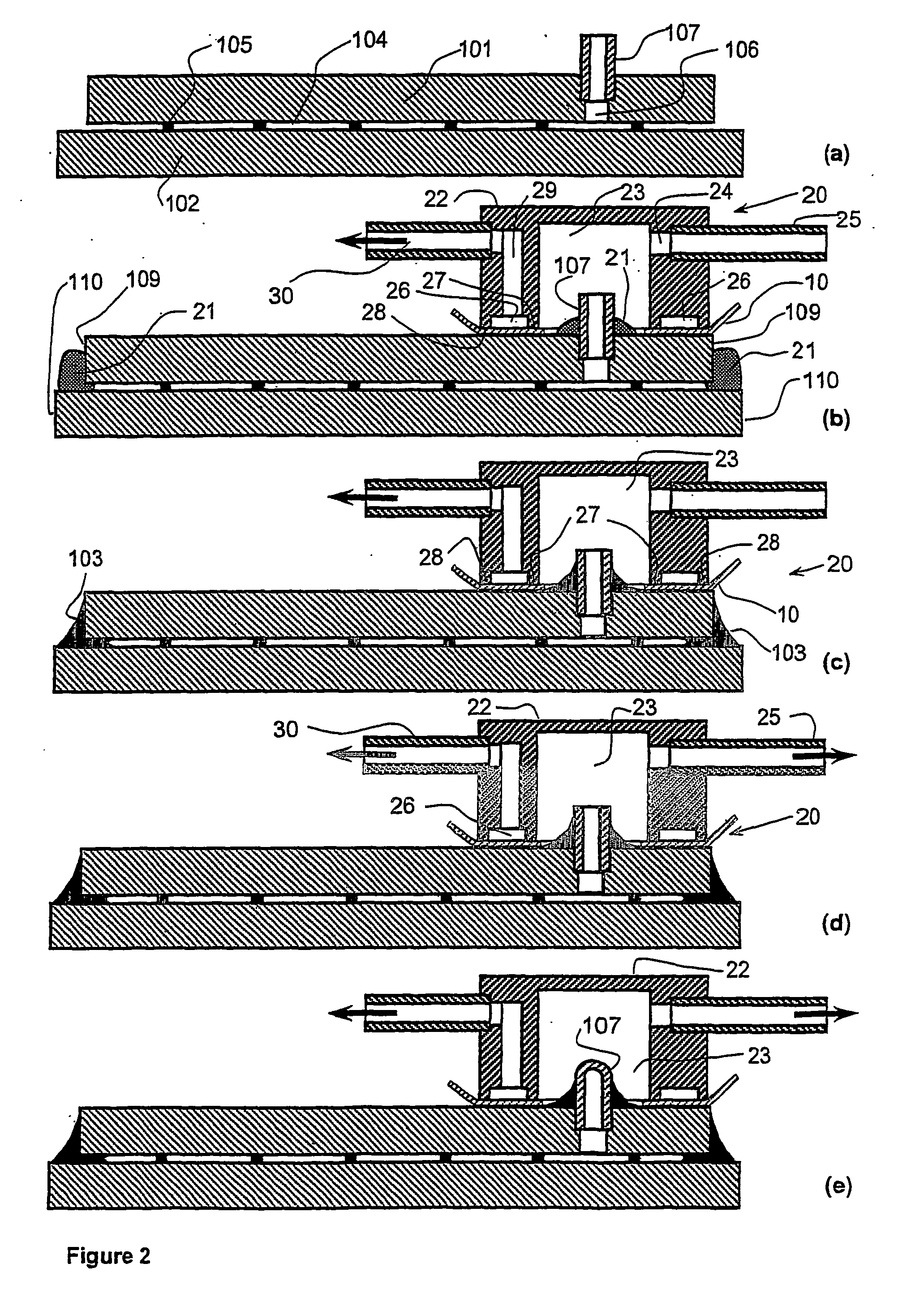Sealing arrangement for use in evacuating a glass chamber
a technology for sealing arrangements and glass chambers, applied in mechanical equipment, packaging, transportation and packaging, etc., can solve the problems of not being able to meet the requirements of requiring a more complex and expensive vacuum system, and the temperature of glass sheets during the evacuation process is limited to about 220° c, so as to reduce the variation in thickness and reduce the variation in point-to-point thickness. , the effect of reducing the quality of the vacuum seal
- Summary
- Abstract
- Description
- Claims
- Application Information
AI Technical Summary
Benefits of technology
Problems solved by technology
Method used
Image
Examples
Embodiment Construction
[0052]FIG. 1 illustrates a flat evacuated glass panel 100 which comprises two plane glass sheets 101, 102 that are maintained in spaced-apart face-to-face confronting relationship. The glass sheets are normally composed of soda-lime glass and are interconnected along their edges by a bead 103 of edge-sealing solder glass.
[0053] A chamber 104 is defined by the two glass sheets 101, 102 and these sheets are maintained in spaced relationship by a network or array of support pillars 105. The chamber 104 is evacuated to a level below 10−3 Torr, this providing for gaseous heat conduction through the sheets that is negligible relative to other heat flow mechanisms.
[0054] The glass sheet 101 is formed with an aperture 106 (see FIG. 2), and a glass pump-out tube 107 is positioned to locate within and project outwardly from the aperture 106. The pump-out tube is sealed to the glass sheet by a bead 108 of solder glass. The pump-out tube is sealed following evacuation of the panel as illustra...
PUM
 Login to View More
Login to View More Abstract
Description
Claims
Application Information
 Login to View More
Login to View More - R&D
- Intellectual Property
- Life Sciences
- Materials
- Tech Scout
- Unparalleled Data Quality
- Higher Quality Content
- 60% Fewer Hallucinations
Browse by: Latest US Patents, China's latest patents, Technical Efficacy Thesaurus, Application Domain, Technology Topic, Popular Technical Reports.
© 2025 PatSnap. All rights reserved.Legal|Privacy policy|Modern Slavery Act Transparency Statement|Sitemap|About US| Contact US: help@patsnap.com



